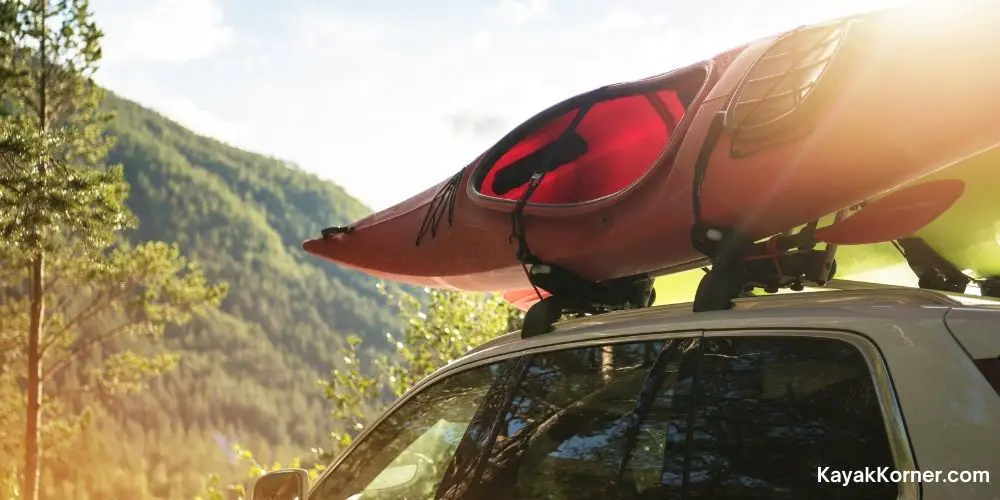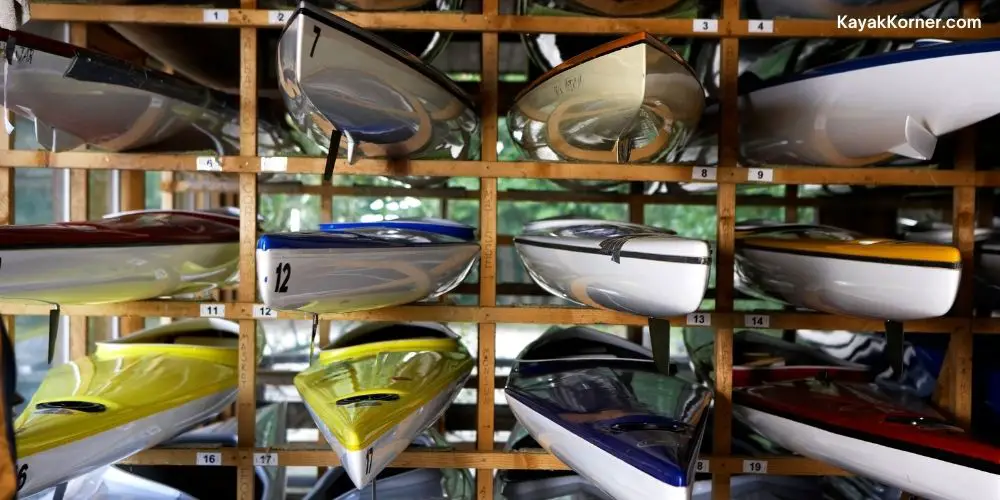Transporting kayaks can be a deceiving job and with the summer rolling out in full swing, many are heading out for canoes and kayaks.
It is a great way of associating with nature as it opens up a world of water exploration. But the real problem lies in getting the boat prepared for the escapade. So, if you are wondering how to transport kayaks, you have come to the right place.
Our Quick Guide On Transporting Kayaks
Transporting kayaks is a skill that everyone should be aware of. Whether you’re an expert paddler or a novice adventurer, starting out can be an overwhelming experience. Here are a few experts’ tips that can help you soar:
Get Cam Straps
Well, though the old hemp straps have served the purpose some years ago, over years cam straps have proven to be more effective.
They are much quicker and don’t take a great effort. You will have to loop around the kayak bars on any side of the loop. Then move on to slide it to its exact position and give a tight pull.
Lastly, you must tie off if there’s any extra spare.
Cam straps can fasten themselves and are very easy to undo. This is definitely a better alternative to those complicated clusters of scout knots, that were used for tying around the roof bars.
Loading the Kayak to the Car
When you got all your accessories and equipment prepared, brace up for loading the kayak to your car. It is ideal to have two people lift it from the ground.
Then you must place it alongside the car in a way so that the stern lies on the rear end and the bow lies at the front.
If you want to load the kayak directly on the racking system, make sure that the boat lies in an upside-down position. This is the case for both hard and soft kayaks. When you want to hoist the kayak to cradle or kayak holder on the car, the right part of the kayak must face upwards so that the hull slots inside the cradle.
When you have a person to help you tow the kayak, then you can have him positioned at the side of the stern. You can be at the bow on your knees for lifting the kayak on the rack.
But the real challenge is to load the kayak yourself. There are several types of kayak loading equipment, that assists people to load and transport kayaks.
K-rack kayak Load Assist comes to the rescue in such instances. They come with suction cups and frames molded to cradle so that you can glide the boat off the ground to any other surface.
Tying the Kayak to Your Vehicle
Round-shaped objects are very difficult to tie and the same goes for the awkward shape of kayaks and canoes. So the general rule of thumb is to tie the bloated part of the kayak between two straps.
If you tie them way too much forward or slightly backward, then it could be a problem.
Over the span of the journey, the jerking may wriggle your kayaks free. It is their tendency to squeeze themselves free from the tight grip of the straps.
This is quite similar to squeezing out lemon seeds from between the fingers. Thus, you should make sure that the fattest area of the kayak should lie between two cam straps. Otherwise, you can never guess when it will make an escape.
Tying the Straps Through the Vehicle’s Grab Handles
When you are contemplating how to transport kayaks, a common image that comes to mind is that of boats coming out loose. If you tie the straps to the grab handles, you can at least be certain that even though your kayak may come loose, it will still hold on to the car.
Many people make the mistake of tying a single strap all-around two bars. In some cases, this actually works fine.
But it will not be prudent to depend on a single strap tie throughout the transportation. If your vehicle has uprights placed on the bars, then you should never cross-tension them. It exerts a lot of pressure on the attachment points of the roof racks and may pull out the bars from the roof.
Therefore, you should opt for separate straps for every roof bar.
When you are carrying kayaks on the roof of your vehicle, odds are that there’s an overhang at the backside. As an added safety measure, you can tie the front and back end of the kayak to the towing loop of the vehicle.
When the overhanging load measures over a meter, it’s advised that you attach something very bright to make others aware of it. For instance, a fluorescent dry bag is going to be a great marker for such loads.
Transporting The Kayak Using Your Car
As a driver, it is your responsibility to check that the kayak is properly tied to the car. Even if someone else is tying it out for you, make sure that you have checked everything before setting off.
When you have finally figured how to transport a kayak, you are all ready to securely head off towards the destination.
But it is also important to check the pressure of the tire. You can look for the information on adjusted pressure in the car handbook.
Considering the load on the car, you should give a slightly additional space between your car and the vehicle standing before you. When you are on a long-distance trip, you should take breaks at regular intervals to check everything is securely fastened.
If you are doing this for the first time, it can be difficult to figure out how even a very tightly bound tie-downs can come out owing to the pressure of the moving car and air resistance.
Although it is obvious that you want to reach your destination at the earliest opportunity. This scrutiny is mandatory when wanting to be know how to transport kayaks safely.





